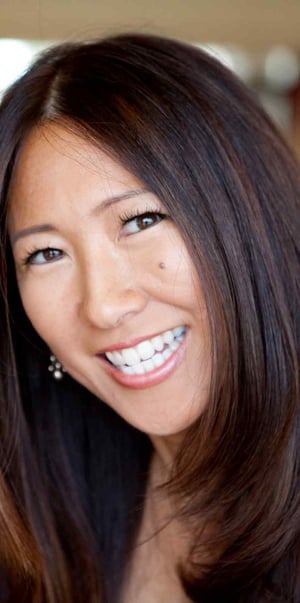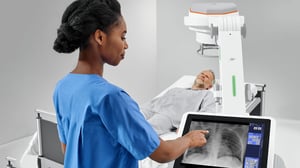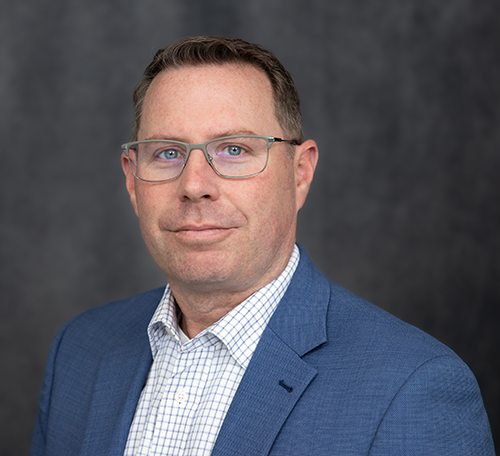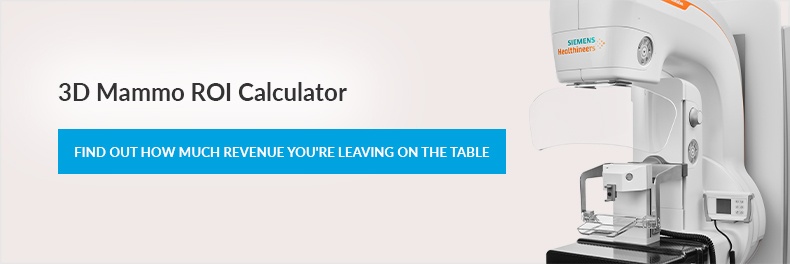Radiologist Talks AI, Mammography, Women in Radiology in the Podcast
by Kyle Salem, Ph.D. on Oct 8, 2019
 On this episode of the Cassling Academy Podcast, Dr. Kyle Salem talks to Dr. Alyssa Watanabe, a Clinical Professor of Radiology at USC Keck School of Medicine and the Chief Medical Officer of CureMetrix, an AI software company focused on medical imaging. Their wide-ranging discussion touches on everything from Artificial Intelligence in imaging, the evolution of mammography, the rise of second opinions, how women can become leaders in radiology and more!
On this episode of the Cassling Academy Podcast, Dr. Kyle Salem talks to Dr. Alyssa Watanabe, a Clinical Professor of Radiology at USC Keck School of Medicine and the Chief Medical Officer of CureMetrix, an AI software company focused on medical imaging. Their wide-ranging discussion touches on everything from Artificial Intelligence in imaging, the evolution of mammography, the rise of second opinions, how women can become leaders in radiology and more!
The following is an interview transcript edited for clarity and length. If you prefer, you can listen to the full podcast in the player below.
Kyle Salem: I'd like to welcome everybody back to the Cassling podcast series. This is your host, Kyle Salem, and today I'm lucky to be joined by Dr. Alyssa Watanabe, a board-certified radiologist in the Southern California area. Her specialty interests include neuroradiology, breast imaging, and artificial intelligence algorithms for medical applications. Welcome Alyssa.
Alyssa Watanabe: Thank you. It's a pleasure to be here.
Modern Mammography
Kyle Salem: Let's start by looking at mammography. When we think about how mammography has developed over recent years, it's always been a strong screening technology for breast cancer, but what I've really seen are big steps forward from mammography that have made it even better over the last decade.
 Alyssa Watanabe: There have been a lot of changes in mammography. For one thing, we went from using actual film to digital and then the more recent change in mammography is going from digital 2D to 3D tomosynthesis. The other thing that's really changed in mammography is the increase in volume and our conversion from going from reading on a film to using the PACS or computer workstations to do our work.
Alyssa Watanabe: There have been a lot of changes in mammography. For one thing, we went from using actual film to digital and then the more recent change in mammography is going from digital 2D to 3D tomosynthesis. The other thing that's really changed in mammography is the increase in volume and our conversion from going from reading on a film to using the PACS or computer workstations to do our work.
Another important factor in breast imaging has been the use of CAD, which is computer-aided detection. And with the advent of AI, there are now very powerful algorithms that have come out such as the CureMetrix software, which is AI-based and much more robust than the old traditional CAD that was available previously.
Kyle Salem: If I think about it as a patient, I should probably be more comfortable now really understanding that the number of false positives and/or false negatives with a test like mammography, which was designed as a screening tool, has gotten much better because of those technology differences.
Alyssa Watanabe: In some ways, yes, and in some ways no. We still have a lot of challenges with women who have dense breast tissue, which makes mammography more limited. And also the fact that we still have a lot of false positives in mammography. Even today with breast screening, almost half of the cases that are discovered are in the later stages, and we still spend about four billion dollars a year on false positive recalls in related workups like benign biopsies, so we can still improve.
I think with the improvement in technology, such as 3D, and also the improvements that are going to come with AI, that we will be able to do a better and better job in the future of detecting breast cancer and detecting it earlier.
AI’s Role in Radiology
Kyle Salem: With that lead-in, let's take that jump and talk a little bit about what AI has done. Can you talk a bit about how artificial intelligence works and what it tries to do from an application standpoint for the reader?
Alyssa Watanabe: One of the areas where AI is very powerful today is in the area of image analysis. Anyone who's ever played the game “Where's Waldo” knows how laborious it can be to find this little Waldo person in a very crowded, busy image. And so the same thing is true for finding cancer in very busy breast tissue. AI can be used for certain mundane tasks such as image detection and can help facilitate a radiologist to detect lesions more quickly and accurately, and then focus more of their time on the workup, management and treatment of a disease.
Kyle Salem: So you're not telling me that we're going to use a computer to replace the radiologists?
Alyssa Watanabe: That's not what it's being developed for currently. The AI in its current form is a really powerful tool, but it is not designed to replace a physician. Doctors with an eye to the future will see AI as an asset and something that will aid the radiologist and not replace us.
 Kyle Salem: The radiologist can spend more time focused on ensuring the diagnosis is correct and really talking about how the patient sets up a plan to deal with what the results may or may not be and treatment and coordination of patient care. They can be really focused then on the patients, which I think is really important.
Kyle Salem: The radiologist can spend more time focused on ensuring the diagnosis is correct and really talking about how the patient sets up a plan to deal with what the results may or may not be and treatment and coordination of patient care. They can be really focused then on the patients, which I think is really important.
If we had somebody who's not on board with the idea that AI is helpful for the future, what might you say to them?
Alyssa Watanabe: When AI was first being presented at radiology meetings, there was a lot of hype and fear. But the reality is that radiologists are in high demand throughout the country, and medical imaging volume continues to grow year after year as our population increases in size as well as our median age increases. The radiologist using AI is going to have a huge competitive edge over the one who is not. AI will enhance productivity and accuracy, and it's going to reduce physician burnout.
The radiologist of the future must embrace AI in the same way that we have adopted new imaging techniques and pharma. And anyone who doesn't is going to quickly find themselves outdated as well as overwhelmed with the increased burden of volume and numerous ancillary tasks.
Kyle Salem: What would you think, if we had to look farther out into the future, what are the things that you would predict for the future of AI, or that AI would have the most impact on in, say, 10 years from now?
Alyssa Watanabe: I think we should all anticipate that there will be improved clinical outcomes, that AI products will reduce healthcare costs, that radiologists will have more job satisfaction and thereby greater retention within the workforce, and that there will be increased consumer demand for AI.
There are AI products that are available already to reduce scan time. I've already seen research on AI products that can reduce the amount of contrast that has to be given to patients. In the near term, all X-rays at some point will be pre-analyzed by machine, and we won't be reading cases in the first-in first-out method that we do currently, and software like cmTriage is going to be used to presort the worklist so that cases are distributed more evenly or distributed more appropriately to the radiologist's skillset. And then cases that are suspicious are going to be floated to the top of the worklist so they can be prioritized.
A New Era of Second Opinions
Kyle Salem: Where does the idea of subspecialty radiology and/or second opinions really start to fit into this whole ecosystem that we're talking about?
Alyssa Watanabe: I think the second opinion market is going to become huge. Currently, most people don't have access to a second opinion unless they know a radiologist. But with companies like DocPanel now available, people can now get second opinions on demand and choose to have a specialty radiologist do a second opinion on their case.
 This could be really powerful as more and more patients become empowered in their healthcare and can also take control of their own healthcare data. Most imaging centers simply can't offer a specialist in every area. And I think that's where a company like DocPanel can really distinguish itself and offer something unique, because it enables any patient to have their exam read by someone who is very specialized in a particular area, and the ability to get a subspecialty reading from anywhere in the world. And that's something that most imaging centers and hospitals can't offer.
This could be really powerful as more and more patients become empowered in their healthcare and can also take control of their own healthcare data. Most imaging centers simply can't offer a specialist in every area. And I think that's where a company like DocPanel can really distinguish itself and offer something unique, because it enables any patient to have their exam read by someone who is very specialized in a particular area, and the ability to get a subspecialty reading from anywhere in the world. And that's something that most imaging centers and hospitals can't offer.
Kyle Salem: Let's take a step back and, for our listeners, talk a little bit about DocPanel. Can you describe what DocPanel is and how it works?
Alyssa Watanabe: DocPanel is a teleradiology company that opens up the possibility for anyone to get a confidential second opinion on their imaging study.
They also offer radiology overflow services as well as specialty readings. So, in the case of telemammography, if a facility has a backlog or their mammographer is on vacation or becomes ill, a company like DocPanel can really fulfill a need in getting cases read remotely for a facility that otherwise might go unread for weeks.
The unique thing about DocPanel is that it can offer business-to-business services as well as business-to-consumer access to AI products. In this early stage of AI, this might be the best solution for getting AI available because most facilities or imaging centers can't offer the full palette of AI algorithms that are available. And many imaging centers don't have the resources to purchase a 3D processing workstation. So DocPanel can fulfill a great need in being able to offer these per-click services to facilities as well as offer direct-to-consumer second opinions and AI algorithms directly to patients.
Kyle Salem: I think that's great. Based on what you've talked about with AI, ultimately DocPanel leads to better outcomes.
Alyssa Watanabe: That would be the hope.
Women in Radiology
Kyle Salem: It's been interesting to see the ratio of male to female radiologists has stayed steady at three to one, even while the number of female physicians has grown, and the ratio of male to female physicians has actually come closer and closer to one.
Can you comment on how you've seen the field change, and maybe if there's a sense of what we could do to potentially bring more women into the field of radiology?
 Alyssa Watanabe: This is a really important topic. A lot of women in medical school don't even consider radiology as a career option. And this is partly due to a lack of mentorship and lack of exposure. Even women radiologists tend not to obtain top academic or leadership positions compared to our male colleagues.
Alyssa Watanabe: This is a really important topic. A lot of women in medical school don't even consider radiology as a career option. And this is partly due to a lack of mentorship and lack of exposure. Even women radiologists tend not to obtain top academic or leadership positions compared to our male colleagues.
My recommendation is that women engage and focus on finding ways to support other women and serve as role models. We also need the leadership at the top to invite women to speak, participate in panels, and have opportunities to advance. With more exposure and higher profile, I think more and more medical students would be interested in radiology as a career.
Kyle Salem: Yeah. I certainly think there are still some, I don't know that I would call them fully structural hurdles, but certainly opportunity hurdles that make more women entering the field a little more difficult.
Alyssa Watanabe: There are private and public institutions that won't allow radiologists to join in a partner track or get credit towards advancement in tenure unless they're working full-time. So there needs to be more accommodation for women who need to work in a less than full-time position for part or all of their careers. I've also seen very few women involved in the area of radiology informatics, as I witnessed at the last SIIM [Society for Imaging Informatics in Medicine] meeting. And my recommendation is that women engage in and learn about informatics and AI because it will support their career and their professional profile.
There are groups like AAWR [American Association for Women Radiologists] that are dedicated to promoting the professional growth of women radiologists. And now we also have RADxx, which was founded by Dr. Geraldine McGinty, which supports women radiologists in informatics.
I've also seen some support from the leadership at the ACR, ASNR and ASSR, and it would be my hope that other radiology organizations will also follow suit in their support of women in radiology.
The Future of Radiology
Kyle Salem: If there was a way that we looked at the field of radiology and said, "Where in five years or even 10 years do you see that being fundamentally different?" What is the one area of radiology that you think will be different?
Alyssa Watanabe: In general, in the next five years, I see that there's going to just be continued increase in volumes. What I see right now is that more and more radiologists, and physicians in general, are burnt out, and there are more physicians that are going part-time or retiring. I think to enhance the radiologist's job satisfaction and retention, there has to be more accommodations for doctors who need to work in a less than full-time position. There needs to be more accommodation on the side of facilities to find ways to make the radiologist's workday more pleasant, more efficient and even more ergonomic.
I think AI is going to be a big gamechanger. The goal in the next five years is that AI will help physicians and facilities be more efficient and have improved accuracies. It will give the radiologist freedom from doing mundane tasks, and it will give us more opportunity to spend time with patients and interact with colleagues. AI could be the game changer for radiology in making our practice continue to thrive and for radiologists to have greater job satisfaction.
Kyle Salem: I couldn't agree more. I think if we look at the past history and even my experience as an imaging researcher, the one thing we've been really good at in the past is creating more and more images for the radiologists to read without thinking about how we're impacting the radiologists themselves and what their response is to having a larger and larger work burden.
I think we've done a disservice to the radiology community by not looking at new, novel and better ways to both produce better diagnoses and ultimately find disease faster and quicker, while not burning out our radiologists in the process. It's always important when we think about healthcare to remember that we're dealing not only with an industry and careers, but we're also really directly impacting people's lives and families.
Before we wrap up today, are there any other additional comments you'd like to make? Anything you'd like to leave our listeners with?
Alyssa Watanabe: AI is here and ready for clinical use. We know second opinions can enhance accuracy, but it's not readily available to everyone. So I really think that second opinions, such as those offered by DocPanel, may become a very powerful force in the future.
As Chief Medical Officer at CureMetrix, I have seen rapid industry growth, especially in AI, in just a few years. FDA clearance for AI products is occurring at a rapid pace, and it's going to be the early adopters of AI that should anticipate improved clinical outcomes, reduced healthcare costs and improved radiology job satisfaction and retention.
I also think there will be increased consumer demand for AI, and it behooves imaging centers and radiologists to educate themselves on how AI works and how it can be used in individual practices.
Kyle Salem: Great. I want to thank our guest again, Dr. Alyssa Watanabe, for joining us today. I think your insights were well said and certainly spot on. And for all of our listeners, I hope to have you listen again on another future Cassling Podcast.
Meet the Author
Kyle Salem, Ph.D.
President of Cassling
Kyle joined Cassling in February 2005 and was named President in 2017. Kyle holds a doctorate in Biomedical Engineering as well as business education through the Kellogg School of Management. Prior to Cassling, he worked with Siemens Healthcare's Magnetic Resonance Imaging division serving as a scientist and manager.
Today, Kyle strengthens community healthcare by working with customers to ensure Cassling's offerings meet their short- and long-term goals, as well as clinical, financial and organizational needs. With a focus on helping customer increase quality and decrease cost, he manages Cassling's corporate strategy, advising the organization on industry direction and trends to help intelligently drive the growth, while exploring new business opportunities.
Click
here to request more information about Cassling's Speakers Bureau or call 800-228-5462 ext. 1117.




Comments